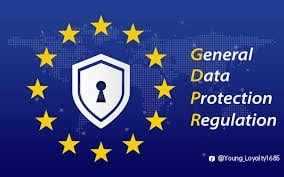General Data Protection Regulation 2018 sets a crucial standard for how organisations must collect, process, and protect personal data in the UK after Brexit — and understanding its implications is vital for any business handling personal information.

In today’s digital era, data is not just a resource — it's a responsibility. The regulation commonly called GDPR (or UK GDPR / Data Protection Act 2018) ensures that organisations put that responsibility front and centre. In this blog, we’ll break down the key elements, obligations, risks, and best practices related to the General Data Protection Regulation 2018, drawing insight from the comparative discussion of the EU GDPR 2016/679 and UK rules.
What Is the General Data Protection Regulation 2018?
After the UK left the European Union, it adopted its own variant of GDPR combined with the Data Protection Act 2018 to govern data protection within the UK. This legal regime retains many of the principles and obligations from the EU version (GDPR 2016/679), yet tailors certain aspects to align with UK sovereignty, regulatory environment, and enforcement mechanisms.
Under this framework, any organisation that processes personal data of UK residents — whether based inside or outside the UK — must comply with the rules. The regulation covers everything from how you obtain consent, how you store and secure information, to how individuals can exercise their rights over their data.
Core Principles & Key Requirements
The General Data Protection Regulation 2018 builds on foundational principles of data protection. Here are the essentials every organisation should internalise:
- Lawfulness, fairness & transparency
- Organisations must have a lawful basis for processing personal data (e.g. consent, contract, legal obligation) and communicate clearly how data will be used.
- Purpose limitation
- Data must be collected for specified, explicit, and legitimate purposes — and not further processed in a manner incompatible with those purposes.
- Data minimisation
- Only the minimum personal data necessary for the purpose should be collected and processed.
- Accuracy
- Reasonable steps must be taken to ensure data is accurate and up to date.
- Storage limitation
- Personal data should not be kept longer than necessary — data retention policies are essential.
- Integrity and confidentiality (security)
- Appropriate technical and organisational measures must guard against unauthorized or unlawful processing, accidental loss, destruction, or damage.
- Accountability
- Organisations are accountable for compliance and must be able to demonstrate it — via records, policies, audits, and evidence.
Data Subject Rights
One of the strongest features of this regulation is that it empowers individuals. Organisations must be ready to enable and respond to rights such as:
- Right of access — individuals can request a copy of their personal data.
- Right to rectification — incorrect data must be corrected.
- Right to erasure (the ‘right to be forgotten’) — under certain conditions, data should be deleted.
- Right to restrict processing — processing may be limited under particular scenarios.
- Right to data portability — individuals can request their data in a commonly used format.
- Right to object — processing may be challenged for certain purposes (e.g., direct marketing).
- Rights regarding automated decision-making and profiling — safeguards must be in place when decisions about individuals are made algorithmically.
Organisations must respond to such requests within one month (with possible extensions under specific circumstances).
Risk Assessments & Data Protection Impact Assessments
When processing is likely to result in a high risk to individual rights and freedoms (for example, large-scale processing of sensitive data or systematic monitoring), organisations are required to conduct Data Protection Impact Assessments (DPIAs). DPIAs help identify and mitigate privacy risks before processing begins.
Alongside DPIAs, ongoing risk-based assessments or gap analyses help organisations detect compliance weaknesses, so corrective actions can be taken proactively.
Technical & Organisational Safeguards
To meet the General Data Protection Regulation 2018’s standards, organisations must implement appropriate safeguards, which may include:
- Encryption and pseudonymisation of data
- Access controls, user authentication & role-based privileges
- Regular security audits, vulnerability scanning, and penetration testing
- Incident response plans and breach notification procedures
- Secure deletion and archiving practices
- Employee training and awareness programs
In the event of a personal data breach, organisations must notify the UK Information Commissioner’s Office (ICO) within 72 hours (unless the breach is unlikely to result in a risk to individuals). Affected individuals may also need to be informed depending on severity.
Transferring Data Internationally
A major challenge in a globally connected world is transferring personal data across borders. Under General Data Protection Regulation 2018, data may flow to countries outside the UK only if those countries ensure an adequate level of protection, or other safeguards (such as Standard Contractual Clauses or Binding Corporate Rules) are in place.
Organisations must be careful when transferring data, especially to countries without robust data protection laws, and must document the legal mechanism that justifies such transfers.
Legal Consequences & Business Impacts
Non-compliance can lead to serious consequences:
- Financial penalties. The regulation empowers authorities to impose fines up to £17.5 million or 4% of global annual turnover, whichever is higher.
- Legal liabilities. Individuals may bring claims for compensation if they suffer damage from unlawful processing.
- Reputational damage. Data breaches or compliance lapses erode public trust and harm brand image.
- Operational interference. Investigations, audits, penalties, and remedial actions may disrupt business operations and incur costs.
By contrast, robust compliance enhances trust, strengthens your security posture, and enables smoother collaborations, especially across borders or in regulated sectors.
Steps to Compliance: Practical Roadmap
Here’s a simplified roadmap to embed General Data Protection Regulation 2018 compliance into your organisation:
- Assess your current state — map data flows, identify processing activities, and perform a gap analysis.
- Design policies & procedures — consent management, retention & deletion policies, privacy notices, DPIA templates, vendor contracts.
- Appoint roles — designate a Data Protection Officer (DPO) where necessary, assign data processing responsibilities.
- Implement technical controls — encryption, access controls, regular security testing, logging, and backup strategies.
- Train staff & build awareness — ensure everyone handling personal data understands obligations, proper handling practices, and breach reporting procedures.
- Monitor & audit — conduct regular compliance audits, risk assessments, incident drills, and continuous reviews.
- Respond to requests & breaches — maintain processes for data subject requests (DSARs) and for breach notification and remediation.
Conclusion
The General Data Protection Regulation 2018 is more than a compliance hurdle — it is a framework that reaffirms individuals’ rights over their data and compels organisations to adopt robust safeguards. By aligning internal processes, investing in technical systems, and nurturing a culture of privacy, organisations can turn regulatory obligations into a competitive advantage.
风险提示:本文所述仅代表作者个人观点,不代表 Followme 的官方立场。Followme 不对内容的准确性、完整性或可靠性作出任何保证,对于基于该内容所采取的任何行为,不承担任何责任,除非另有书面明确说明。


加载失败()